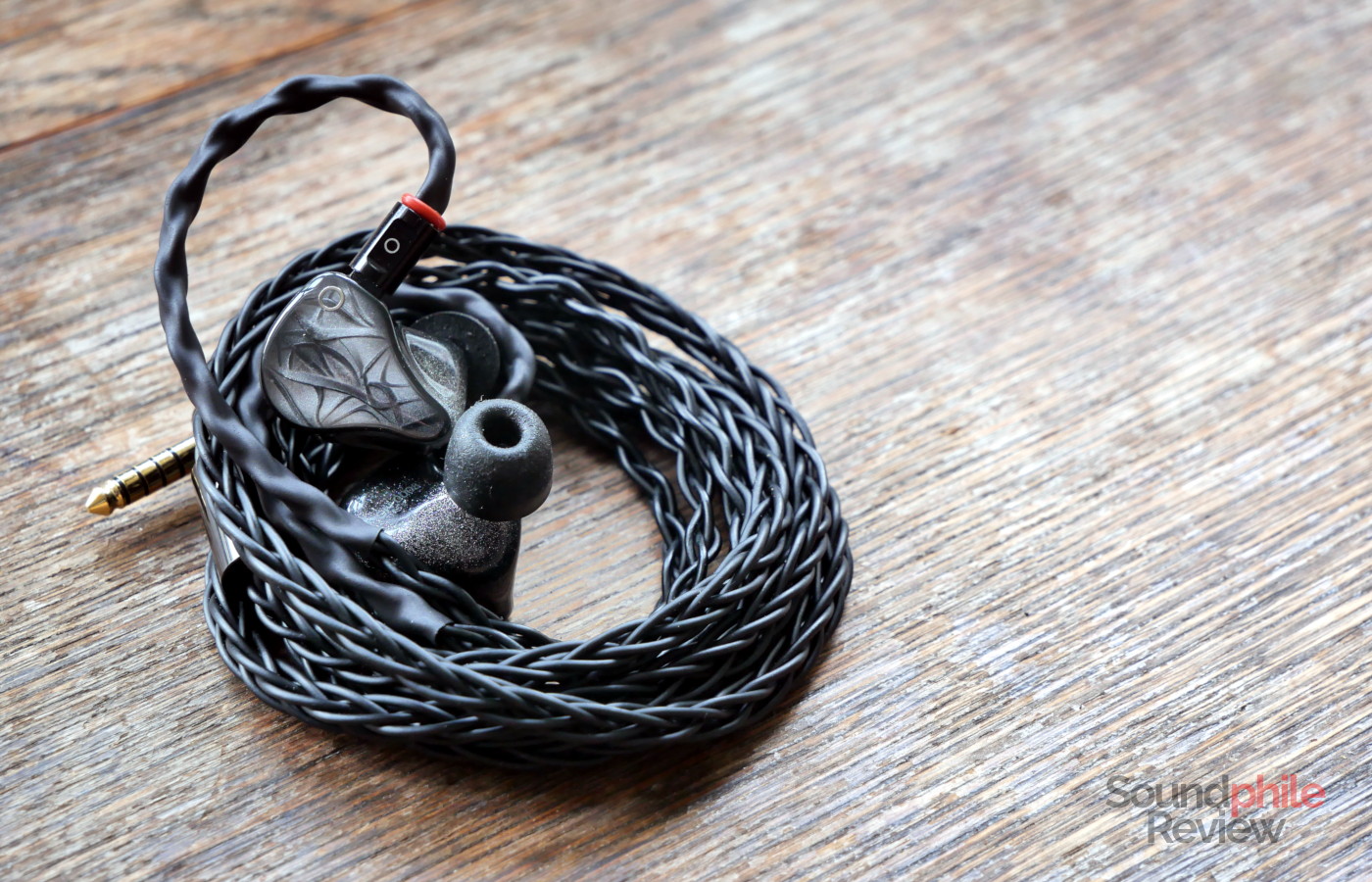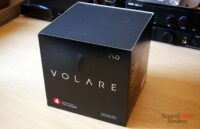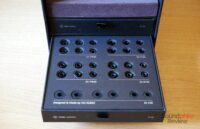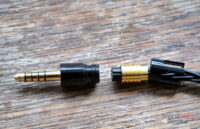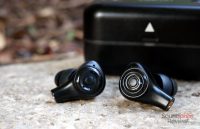IO Audio, which they stylise as “I\O Audio”, is a new company which makes its unusual debut with a complex product. The IO Audio VOLARE are earphones which target the mid-range market and do so with a remarkable sound, which is the product of an even more remarkable engineering.
Disclaimer: I got this unit from Shenzhen Audio, who kindly sent it free of charge. The VOLARE retail for $599. They’re on offer at Shenzhen Audio.
TL;DR: recap
| Pros |
Cons |
| + Excellent build quality
+ Incredible accessory set + Multiple terminations with a single cable + Almost perfectly flat tuning + Awesome technical ability + Amazing passive isolation + Great value, even at $600 |
– The bump in the upper mids can be intense
– No grille on nozzle |
Rating: 9/10
Packaging & Accessories
Although I am not entirely sold on the idea of the so-called “unboxing experience”, sometimes it is so good it deserves a round of applause. That is the case with the I/O Audio VOLARE. The earphones come in a large cubic box which opens like a jewel case: the top opens up, while the front goes down, revealing the earphones’ case on the top and three small drawers. The case contains the earphones themselves held still by pre-formed foam; it can be easily removed to get enough space to accommodate the earphones with the cable and some accessories. The bit in the lid is more difficult to remove and I had to use a small screwdriver to coax it to come out; under it there is a small net which can hold some accessories. While I understand the necessity to keep the earpieces still during transport, the foam could have had indents to facilitate removing it.
The three drawers respectively contain the cable with three different adaptors, a Velcro strap to keep the cable tidy, five sets of eartips in three different sizes, and the manual plus a 3.5 mm to 6.3 mm adapter. The eartips include one set in foam plus four sets in silicone: there is a set in single-density silicone, and the others are all dual-density with increasing thickness of the inner boring.
This is quite possibly the richest set of accessories I have ever come across and it surely is among the best-presented ever. While I do not believe it makes any actual difference, I/O Audio surely got my attention with this – and, as we say in Italy, “anche l’occhio vuole la sua parte”, which literally translates as “even the eye wants its share” (meaning that beauty is not superfluous).
Design & Comfort

The IO Audio VOLARE sport a familiar IEM-like design, with large triangular shells. The faceplates are decorated with a motive made of wavy lines. The colours are quite mute, as there are variations of black, grey and white. The shells themselves are glittery, with a black or dark grey base with silvery glitter. I’m not a super fan of the glittery look of the shells and in fact I think they would have looked better with a plain black colour, but then again this is strictly down to personal preference (and I think it’s not that important, either!).
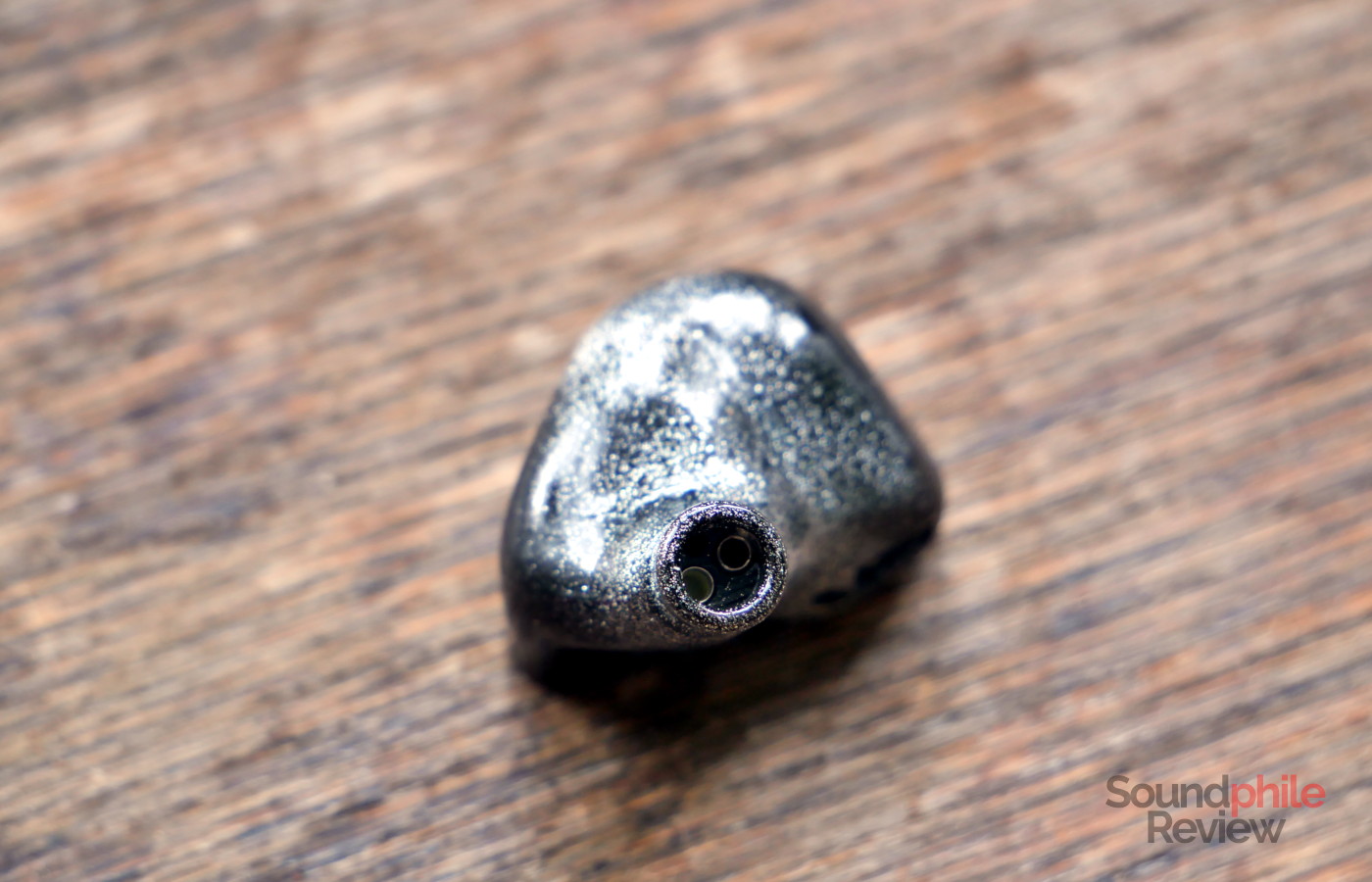
Build quality is very high, although it should be noted that there is what we might call a design flaw: the nozzle is not covered by a grille, as is usual in order to prevent dirt from entering the tubes. This means that the tubes are directly exposed, which may lead to them being obstructed by dirt with usage over time.

In terms of comfort, the IO Audio VOLARE work really well in my case: they are large, but they are also shaped in such a way that makes them sit in my ears very comfortably for hours. Then again, comfort is extremely subjective, so your mileage may vary.

Passive isolation is significant: I wore the VOLARE on a flight and they were able to reduce the noise from the engine to the point I could enjoy the music without raising the volume too much. As a funny anecdote, while writing the section on the cable you can find below I was wearing the earphones and listening to music; only when I took one earphone off to look at the ear hook I realised that there were very noisy roadworks going on under my window.
The cable is thick and well-made. It has eight cores, weaved in a circular braid until the Y-split, where it separates into two groups of four cores. A very interesting element is the jack: the connector can be replaced so you have a 2.5 mm balanced jack, a 3.5 mm unbalance one or a 4.4 mm balanced one. There is a bit that screws to the jack so that it stays in place. The mechanism is rather ingenious and works really well. While the Y-split and the housings for the 2-pin connectors are made of metal, due to the complexity of the design the jack connector housing and the locking mechanism are made of plastic. The ear hooks are covered in thermoforming sleeves which help increase the comfort as well as keep the shape.
Sound & Specs
I tested the IO Audio VOLARE mostly with my SMSL DO400, as well as with a Hidizs S8 Pro. It turns out that the VOLARE don’t need much power and will behave very well even with low-end DAC/amps like the S8 Pro. It should be noted, however, that due to the very low impedance (just 4.8 Ω!) the sound will be affected by the output impedance of the device you use and the VOLARE will sound best only with extremely low output impedance devices (below 0.6 Ω).
IO Audio VOLARE |
| Frequency response | 10 – 40,000 Hz |
| Impedance | 4.8 Ω |
| Sensitivity | 121 dB/Vrms |
The IO Audio VOLARE use three different drivers (and they are therefore “tribrids”): one dynamic driver for bass, four balanced armatures for mids and four electrostatic drivers for highs. In my experience it is always very difficult to carefully balance these different drivers, so earphones with similar configurations always end up having either peaks or dips which are significant and take away from the listening experience. That’s not so with the VOLARE, which is remarkably linear and only has a couple of small bumps in the upper midrange. Considering this is IO Audio’s debut product, it is nothing short of astonishing that they were able to tune these earphones so carefully.
Soundstage has very good width, as well as a good amount of depth. It sounds like you’re in a large room that extends both to the sides and to the front. Imaging is such that the instruments are positioned in the whole spectrum of places from extreme left to extreme right, with very good central placement too; each instrument has a clear, well-defined place too. Instrument separation is great and individual instruments remain discernible even in complex tracks.
I would define bass as almost perfectly neutral, with very good extension towards sub-bass that touches the lowest notes easily. It is slightly more emphasised than perfect neutrality would dictate, but I find that this is an addition rather than an issue as the added bass is not invasive at all and only gives more punch to the sound. It never sounds excessive nor bloated; quite the contrary, in fact. One remarkable thing is the speed: transients are very fast and offer good physicality, so drum hits, as an example, are engaging and fun to listen to. As a consequence of speed, detail is very good and so is layering: even in crowded tracks with multiple lines playing at the same time, bass is always very clear and clean.
Midrange is a tad more complicated than bass, in the sense that it is under-represented below the 1 kHz mark and over-represented above it, with the top of the bump around 3 kHz. While the lower midrange doesn’t sound distant due to being under-emphasised, the upper midrange does sound a tad bright because of the bump there. The emphasis is not such that it introduces aggressiveness or fatigue, as it is just 2-3 dB, but it is enough to be noticeable, especially in tracks with high-pitched instruments such as electric guitars and violins. This also gives a slight boost to female vocals and makes male vocals sound slightly more distant, but the effect is limited. Detail is remarkable and remains so in crowded tracks as well.
Treble is very well done in the sense that it is almost linear and lacks significant peaks that would make it fatiguing. There are two bumps, around the 8 kHz and 12 kHz marks, but they are not such that they cause issues. Overall, treble is almost perfectly neutral and sits right where I expect it to be, which means you can hear cymbals and other similarly high-pitched instruments clearly without them being invasive. There is a lot of detail to be found here, which goes well into micro-detail territory; the interesting thing is how well the detail retrieval works: by this I mean that it is very easy to hear the (micro-)details even with layered tracks and when the instruments are on the quieter side. This, again, seems to be the result of the great job IO Audio has done when tuning these earphones.
Final Thoughts
I have found throughout the years that many multi-driver earphones have issues with crossovers not being applied correctly or with peaks and bumps in the frequency response of individual drivers which were not taken into proper account in the design phase, leading therefore to uneven and often fatiguing tunings. This is not what happens with the VOLARE at all. IO Audio did an absolutely remarkable job at crafting a set of earphones which is amazingly linear in its tuning, with just a couple of deviations which do not cause (too many) issues. It is significant, and therefore noteworthy, that they achieved this with electrostatic drivers (which are often difficult to tune properly) and a “tribrid” configuration at their first attempt.
Overall, I think that the IO Audio VOLARE do not have that “wow” effect some earphones have. In many ways, they are unremarkable. And I find this amazing! That’s because they mostly stay out of the way so that you hearing the music and not the earphones. They may not be the most neutral, the most technical or the most detailed earphones out there, but they have the right combination of everything that works well. And this extends beyond the acoustic department, too: they work remarkably well with everything you throw at them, be it classical music or The Prodigy, or even games.
My sincerest congratulations go to IO Audio for achieving such a result on their first attempt. I am really curious to see what they are going to do with future products. I find that the VOLARE are worth the asking price, which is quite significant given the large $599 tag on them. Totally recommended!

